New Jersey Butterfly Club
A chapter of the North American Butterfly Association (NABA)
Banded Hairstreak
Satyrium calanus
Identification: Very small—size of thumbnail Almost never seen with wings open. Below: FW and HW dark to light gray with irregular white lines on both wings. The dark postmedian band on HW, usually bordered by white on the outside only, may have white on both sides. Cell-end bar and bar touching leading edge of HW are present but are not aligned. HW has large blue spot on margin near tail that is flanked by smaller orange spots, but is not capped by orange. Similar hairstreaks: See discussion under Hickory Hairstreak.
NJ Status and Distribution: Resident. Our most common and widespread Satyrium hairstreak. Reported from most counties.
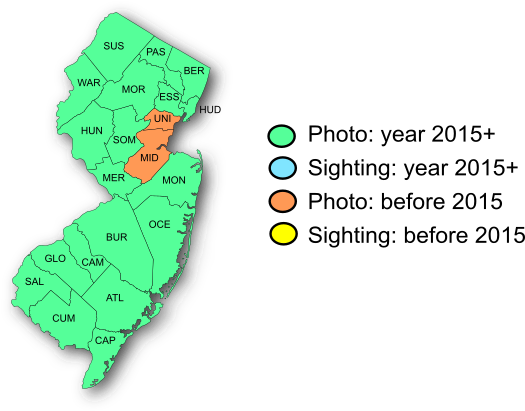
Habitat: Edges of deciduous woodland with oaks and hickories. Can be attracted to gardens with flowers such as mints and milkweeds provided that the garden is within 100 feet or so of a woodland with oaks.
Flight Period: Single brood that flies from early June to mid-August. Extreme dates: North Jersey 6/4—8/24; South Jersey 5/31—7/25.
Caterpillar Food Plants: Oaks (Quercus), hickories (Carya), and walnuts (Juglans).
Overwintering Stage: Egg.
Good Locations: Any area with stands of milkweed and Indianhemp near an oak woodland is worth checking out.
Comments: Populations of Banded Hairstreak—like some other hairstreaks—fluctuate wildly. In a given year dozens to hundreds may be seen in one day (or even at one location), and then hardly any appear for the next several years.
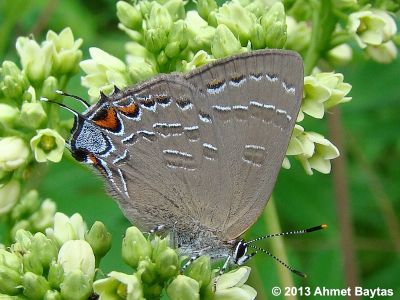
Mountainside Pk., Morris Co., NJ, 6/8/10, on Indianhemp.
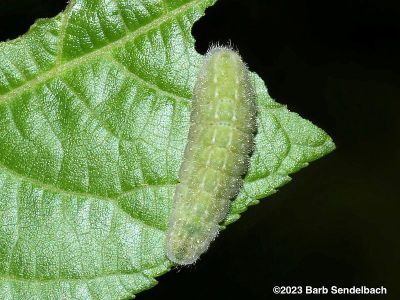
Caterpillar on Butternut a.k.a. White Walnut (Juglans cinerea).
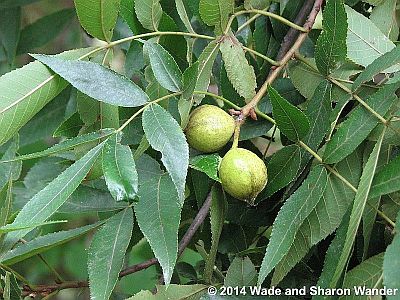
Nuts and leaves of Bitternut Hickory (Carya cordiformis). This upland tree is a food plant for Hickory and Banded hairstreak caterpillars.
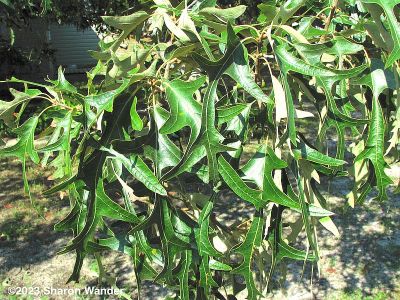
Southern Red Oak (Quercus falcata), a caterpillar food plant for Banded Hairstreak in South Jersey.